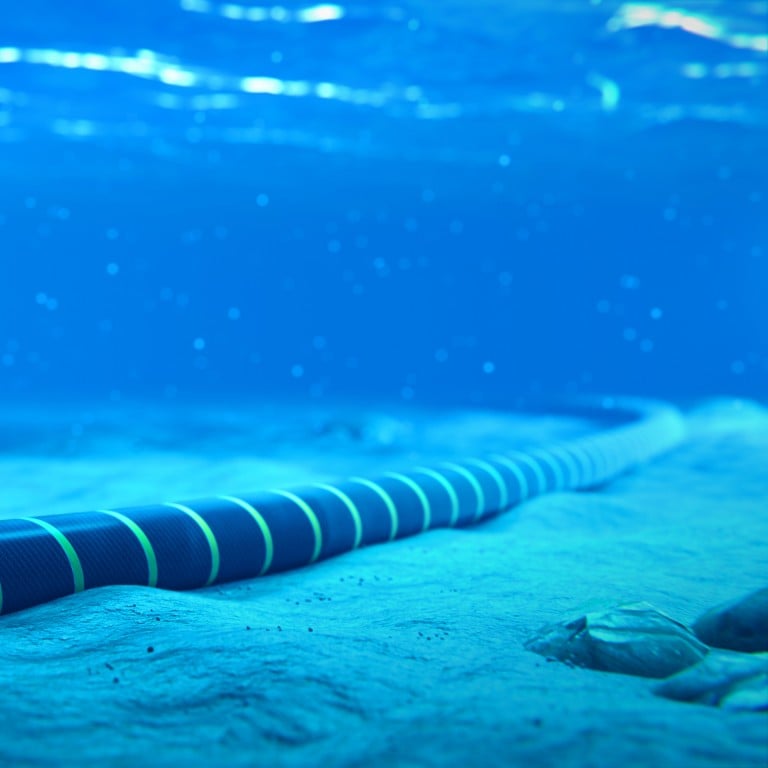
China’s Peace cable linking Europe and Africa arrives in Kenya
- The digital ‘expressway’ starts in Pakistan and will eventually reach France
- The involvement of the Chinese tech giant Huawei has caused concern in the United States
China’s plans to build an information “expressway” connecting China, Europe and Africa have taken a step forward with the arrival of an undersea cable in the Kenyan port of Mombasa.
The Pakistan & East Africa Connecting Europe (Peace) cable is part of Beijing’s Digital Silk Road initiative and will also connect Pakistan, Cyprus, Egypt, France, and Malta.
Oliver Zheng, the chief executive of the company managing the project, said the 15,000km (9,300-mile) project would be completed within “the next few months”.
“We are delighted to announce that Peace has now entered the final stage for the entire delivery and will be put into commercial use soon this year,” Zheng said at an event in Mombasa to mark the landing of the cable.
The submarine cable starts in Gwadar and Karachi in Pakistan, and passes through various sites in Africa, including Kenya, Djibouti, Somalia and Egypt, to end in Marseilles, France. It will be extended to Singapore and South Africa in the second phase.
The project, which has Huawei as one of the shareholders, caused disquiet in Washington, especially during Donald Trump’s administration, which feared that Beijing would use the technology to spy on its systems.
Can China help bring peace to Middle East and Horn of Africa?
The cable’s chief operating officer, Sun Xiaohua said: “Peace will bring more diversified digital connection options and provide high-speed, large-capacity and stable data access opportunities to Kenya in the future. We will spare no efforts with Peace to bring more business development to this region.”
Thomas Blaubach, a graduate fellow with the Cyber Programme at the Middle East Institute, wrote in a recent report that Beijing now boasts strategic infrastructure assets in geopolitical hotspots such as Gwadar and Djibouti.
“Chinese policymakers are thinking about more than just business when it comes to fiber optics,” he wrote.
When the cable landed in Seychelles in early March, Wu Peng, director general of the foreign ministry’s African affairs department, said China “will continue to do our best to support China-Africa digital innovation programme co-operation”.
John Calabrese, head of the Middle East-Asia Project at American University in Washington, said the cable promises to “deliver badly-needed bandwidth to some countries, notably Pakistan – China’s ‘all weather’ friend – and to countries in East Africa”.

He said it complements the “hard” infrastructure, including bridges, ports and railways, built under the Belt and Road Initiative.
“It is another means by which to project Chinese power and influence globally,” Calabrese said.
Calabrese said “US concerns presumably stem from the suspicion that as a form of critical infrastructure built by a consortium that includes Huawei Marine Networks, the cable could well leave information networks vulnerable to Chinese espionage and sabotage”.
“It is also worth noting that US companies – as owners and operators - currently dominate the submarine fiber-optic landscape. So, there is definitely a major power competition dimension here,” Calabrese said.
Eyck Freymann, author of the book One Belt One Road: Chinese Power Meets the World, said in practical terms, the cable is of limited strategic significance—just one of many fibre optic cables in a global undersea network.
How war in Ukraine fuels a food crisis in Africa
However, “in symbolic terms, this is a powerful reminder that the Belt and Road is alive and well, and that despite the United States’ best efforts, Huawei continues to offer an attractive service to many countries,” Freymann said.
He said Washington will have to do more, and work more diligently with allies, to provide a secure alternative to Chinese digital infrastructure.
Hengtong Optic-Electric is laying the actual cable, but Huawei is one of its largest shareholders. Huawei is also providing the equipment for the landing stations and underwater transmission gear.
Hengtong has partnered with HongKong-based PCCW Global, Djibouti Telecom, Golis Telecom Somalia, France’s Orange, Hormuud Telecom, Telecom Egypt, Telkom Kenya and many others.

